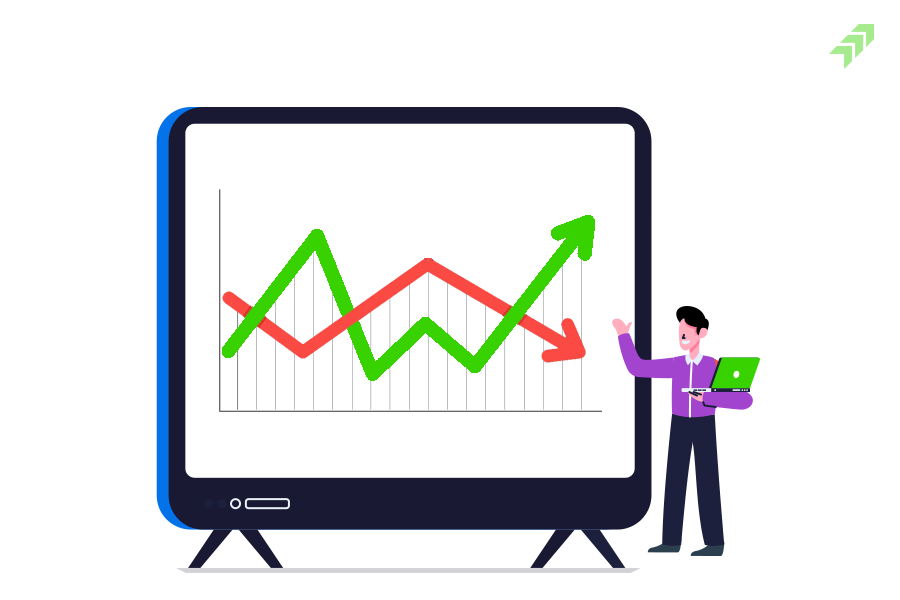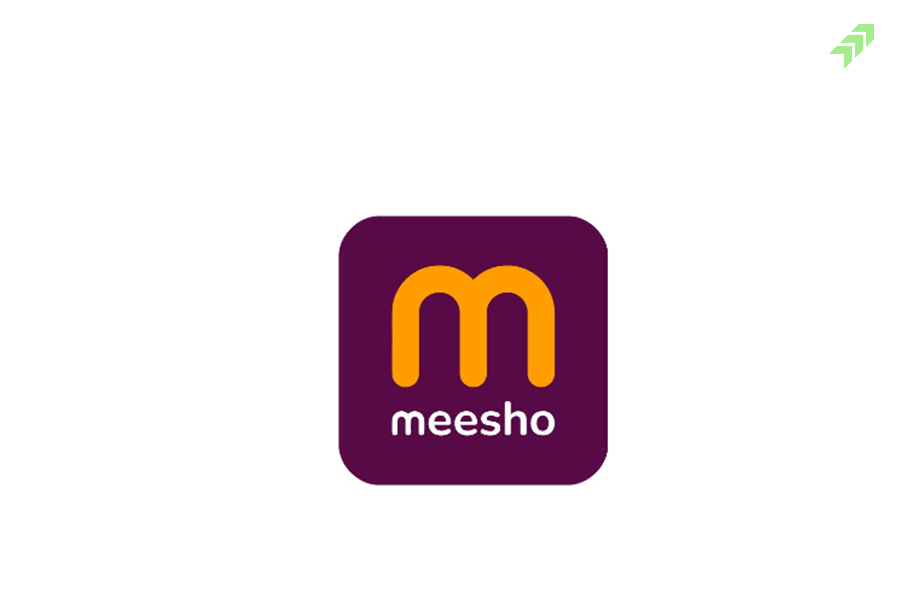When the market is highly volatile, it becomes not only difficult but also very risky to trade as per your strategy. However, for options traders, volatility creates trading opportunities to trade with such a strategy and earn profits from such uncertain market conditions.
Also Read: How to Use Traderadar for Option Strategies as Market Conditions
To utilize the unexpected price movement during high volatility you have to trade with certain right trading strategies with proper risk management.To choose or trade with the right option strategy you should know the deepness of volatility, hence understand here about the volatility and what tools and techniques to measure the volatility with the best option strategy for high volatility.
Also Read: How to Trade in High Volatile Market: Best Trading Strategies
What is Volatility in the Option Market?
Volatility is better known as implied volatility, which can tell you the level of fluctuation of price movement of an underlying security or market. A high implied volatility value shows the price can move unexpectedly in any direction. If implied volatility is low, the chances of price movement are very low and movement can be very low either in any direction.
Also Read: How to Use Implied Volatility in Options Trading: Strategies
The level of implied volatility affects the price of the option premium that the buyer pays and the seller receives in an option contract. And in “Option Geeks”, the measurement of option price sensitivity to volatility is better known as Vega. Vega shows the change in the option premium price on every change in volatility in the underlying security.
Also Read: What are the Delta, Gamma, Theta and Vega in Option Trading
Though the high volatility is good for the option buyers and bad for the option sellers, if you choose the right strategy both can trade in such market conditions.
Also Read: Why Option Selling is Better than Option Buying: Explained
Indicators to Analyse the Volatility in the Market
How would you get to know if the market is highly volatile or trading with low volatility? You have to use certain tools, resources or indicators to measure the volatility level. Standard deviation is used to calculate the VIX, which shows, how the price can fluctuate or move away from the mean. To measure the volatility in the market you can use the following indicators.
Volatility Index (VIX)
The volatility Index (VIX) is calculated on a daily basis and when checking the quote details of a particular underlying security you can see the VIX for the same day. Exchange calculates it using a complex formula and it will give you the probable volatility likely to remain for upcoming trading sessions. However, investors also use the VIX to measure the risk level in the trade.
Bollinger Bands
To measure the VIX, this indicator is also very useful with an indication of overbought and oversold zones in the market. The Bollinger bands consist of three bands or lines plotted on the chart showing the upper and lower values with moving averages of certain trading periods.
Also Read: How to use Bollinger Bands for Day Trading: Intraday Strategy
When the Bollinger bands or lines become contracted or squeezed towards each other, it indicates the volatility is becoming high. While, when the bands expand or move away from each other, it signals the volatility is settling down or making the asset’s price stable.
The Average True Range Indicator (ATR)
The Average True Range Indicator or ATR is another indicative tool for calculating the range of volatility for a particular trading period (day, hour, minute, week). To find out the ATR value you have to take the highest value of these three equations.
Also Read: How to use Average True Range Indicator for Short-Term Trading
This calculation is done many times over a selected time to get an average that you can use as a baseline to calculate the volatility in the market or an underlying security.The high value of ATR means the volatility will be high leading to higher option prices due to high price movement.
On the other hand, the low ATR value means, volatility is low which leads to low option prices due to stable price movement. Apart from gauging VIX, you can also use the ATR to know the potential risk and reward levels in a particular option contract. With the help of knowing the risks and rewards, you can choose the right trading strategy.
6 Option Trading Strategies for High Volatility
1.Go for Long Puts
When the volatility is high, the market is also likely to trade with a downtrend, which makes the put option expensive. If you buy the put options, you can take advantage of downward movement due to high volatility gaining the value of your put.
You can choose this strategy when you are bearish on underlying security with the twin premises of “buy high, sell higher,”. And if you want to reduce the cost of your long put trade position you can buy a further out-of-the-money (OTM) put. However, to counterbalance the cost of the long put you can also enter into a short put position at a lower price.
Also Read: Best Option Strategy for Bearish Market: 7 Option Strategies
2.Selling the Calls
Another useful trading strategy in a highly volatile options market is to shorten the calls, which can benefit you in a declining market. Here you can sell options and enjoy the premium you received even if the market remains highly volatile or moving towards the downtrend.
This option strategy works when market conditions are uncertain you are bearish on the underlying security with expectations the volatility level for the same month contract will retreat. However, selling a naked call could be risky, as there is unlimited risk if the price of the underlying security moves upwards with significant movement.
3.Long Straddle Strategy
When you are very clear, the stock will move either side direction, up or down you can use this trading strategy in a volatile market. Under this strategy, you have to enter into the long call and put the option of the same strike price with the same date of contract expiration.
Read: How to Choose or Pick the Right Strike Price in Option Trading
If you expect the market will move with significant changes but are not assured in which direction it will move, you can use this strategy to utilize the benefit from both sides’ movements. The unexpected movement in one direction will offset the cost of the other option contract, but you need to make sure to enter with the right frame.
Also Read: What Time Frame is Best for Intraday, Option & Swing Trading
4.Short Straddles or Strangles
In highly volatile market conditions this trading strategy will work from the swing in the volatility. To enter into this strategy you have to sell an at-the-money call and put an option at the same time. If the market moves significantly, the movement on one side will offset the loss in another option.
You can choose this strategy when you expect the market will move substantially in either side direction. And while selling you have to buy the underlying security at the strike price even if it is trading at zero, as writing a short call has unlimited risk. But you can minimise your losses with the premium you received at the time of selling the put.
5.Ratio Writing
With this option trading strategy, you can modify the risk of exposure by adjusting the number of options (calls or puts) in your trade position. The best way to implement this strategy is to use a 2:1 ratio, with two options, sold for every option you purchased.
The main motive for entering into this option strategy is to benefit from a significant fall in the implied volatility before the option contract expires. This strategy helps to manage the risk by adjusting the ratios of the options in your investment portfolio.
6.Iron Condors
One of the most popular option strategies also works well in the highly volatile market if executed with the right strategy and timing. In this option strategy, you have to combine the bear call spread with a bull put spread of the same expiration date.
Also Read: Best Option Strategy for Bull Market: 7 Bullish Strategies
You can capitalize on this option strategy when volatility cools down resulting in the underlying security trades in the narrow range during the life of the options. The sideways movement showcases the adaptability of options trading strategies to various market conditions. Trading in a highly volatile market, you also need to trade with the right risk management strategy.
Also Read: Best Option Strategies for Sideways or Range Bound Market
Risk Management Strategy for Volatile Market
As much as the market is volatile, the risk is also high putting your trade position into the risk zone. Hence, you need to be very careful while trading in a highly volatile market and manage the risk to minimize its impact and maximize your chances of returns.
Also Read: How to Manage or Do Risk Management in Options Trading
The best way to minimize the risk due to high volatility is to trade with a stop loss or set the stop loss on every trade while entering into an option contract. This will reduce your chances of incurring major losses in uncertain market conditions that usually arise when the market is highly volatile.
Also Read: How to Set Target Price and Stop Loss in Intraday Trading
Apart from that, you can also use the position sizing techniques as per the changing market conditions to manage the risk from volatile market conditions. You can increase or reduce to trade position or enter into new trade positions as per the movement in the underlying security or market conditions, which will help you to reduce the risk from high volatility.
Summing-up
Volatility in the market makes the price movement unexpectedly move in any direction with significant changes in a single trading session. When the market is highly volatile, and you still want to trade, be careful to know the level of volatility and use the right strategy accordingly. Hence, you can use various tools or indicators like VIX, Bollinger bands or ATR to measure the level of volatility.
Also Read: Best Technical Indicators for Option Trading in TradingView
However, you can trade with various option strategies that can give you returns in highly volatile market conditions. Long puts, short calls, iron condors,straddles or strangles and ratio writing are the popular options strategies also suitable to trade in high volatile market conditions. The best way to trade in such uncertain market conditions is to trade with a proper risk management strategy to minimize the impact of such risk that can cause you losses.
Also Read: How to Recover Loss in Option Trading: Tips to Avoid Losses

















